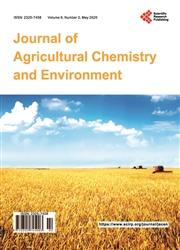Comparative Analysis of Conventional Anaerobic Digestion and Bio-Electrochemical Systems in Waste Organics Utilization
引用次数: 1
Abstract
Anaerobic digestion is often used as an approach to deal with high COD waste streams. Compared to the aeration systems it allows better energy management due to the biogas production but also has several limitations including inlet waste streams quality and the additional equipment required for energy harvesting. In recent years, the bio-electrochemical systems (BES) and processes are intensively studied as a method for organic waste utilization, including wastewater. They potentially could bring several benefits to the wastewater treatment, mainly due to avoiding aeration (and aeration cost) and direct energy recovering in the form of electricity. Besides their anaerobic nature, the biological processes in BES are respiration-like contrary to the fermentative degradation typical for conventional anaerobic digestion which eventually will provide better mineralization and higher efficiency in terms of COD and BOD removal in such reactors. This study is a direct comparison between conventional anaerobic digestion and Microbial Fuel Cell (as a typical BES reactor) during utilization of wastewater from industrial production of ethanol by fermentation. COD removal rates and dynamics, energy recovery properties and parameters such as secondary sludge production are investigated in order to characterize the feasibility and technological readiness of BES as a step towards their commercialization.传统厌氧消化与生物电化学系统在有机废物利用中的对比分析
厌氧消化常被用作处理高COD废水的方法。与曝气系统相比,由于沼气的产生,它可以更好地进行能源管理,但也有一些限制,包括进口废物流的质量和能量收集所需的额外设备。近年来,生物电化学系统(BES)及其工艺作为一种有机废物(包括废水)的利用方法得到了广泛的研究。它们可能会给废水处理带来一些好处,主要是由于避免曝气(和曝气成本)和以电力形式直接回收能源。除了厌氧性质外,BES的生物过程与传统厌氧消化的发酵降解相反,是类似呼吸的,而传统厌氧消化的发酵降解最终将在此类反应器中提供更好的矿化和更高的COD和BOD去除效率。本研究直接比较了传统厌氧消化与微生物燃料电池反应器(典型的BES反应器)在工业发酵乙醇生产废水处理中的应用。研究了COD去除率和动态、能量回收特性和二次污泥产生等参数,以表征BES的可行性和技术成熟度,作为迈向其商业化的一步。
本文章由计算机程序翻译,如有差异,请以英文原文为准。
求助全文
约1分钟内获得全文
求助全文

 求助内容:
求助内容: 应助结果提醒方式:
应助结果提醒方式:


